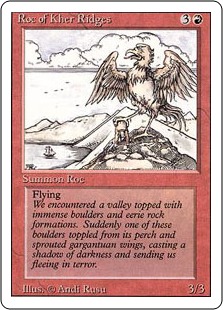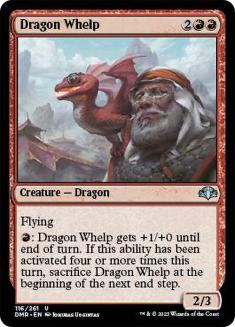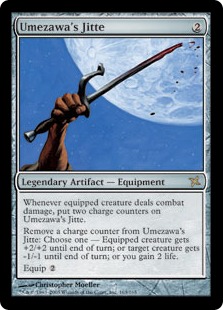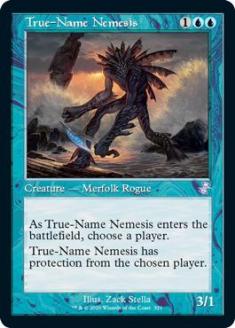Welcome back to the second installment of “Sullivan’s Satchel,” a name which I neither approved nor objected to strenuously enough to come up with my own. Lots of thoughtful design and design-adjacent questions to delve into this week, so thanks to everyone who sent theirs in. As always, you can send yours in at [email protected], and don’t feel limited to a narrow scope—I’m happy to delve into anything that’s interesting and affords me the opportunity to pad the ol’ word count. With that:
John writes:
You’ve mentioned how much you love Alpha as a set and how well it holds up over time. How do you feel about Magic’s first expansions — Arabian Nights, Antiquities, and Legends?
Magic’s first set is a masterpiece, and not just because of the whole “creating Magic” thing. It grades out surprisingly well when it comes to elements of set structure, like “What designs should be at which rarities?” and “Are any of the designs in the file too similar to one another?” Maybe Fireball is too complicated for common, and maybe you shouldn’t do Roc of Kher Ridges and Dragon Whelp in the same file, but these are minor sins in the scheme of things, especially when compared to all the things Alpha got right. It got so many elements of set structure right the first time around, better than many sets that came a decade or more later, which is astounding if you assume people should get better at this stuff over time.
Magic’s first expansions don’t have quite the same historical oomph as Alpha but they still represent significant steps forward, at least in certain respects. Arabian Nights starts from an interesting theoretical: “What if all the creatures weren’t atrocious?” It would be nice if so many of the pushed creatures weren’t “big stats + drawback,” but the Djinns and Efreets give some flavor justification for it. The lands in Alpha are all either basics or duals, so to go from that to lands that tap for colorless or nothing at all with a power plus one five-color land is an impressive leap of technology. The set is light on cohesive mechanical elements, but it has an array of appealing one-off designs and mostly puts the power in the right places.
Antiquities is a massive undertaking: the first Magic set designed around a gameplay element, in this case artifacts. Antiquities takes this several steps too far; I believe every card in the set is either an artifact, a card that references artifacts, or a land that taps for colorless mana. It’s not unreasonable to try to go “all out” the first time around, though. The text box length is a little out of control (though much of that is a function of old templating), the creatures are too bad across the board, and the set is short on straightforward appeal (mostly because everything cares about something specific and/or is a creature that sucks). Even with those massive flaws, Antiquities is still a major step forward in Magic design.
Legends is a very cool set. First of all, it’s massive. I don’t think it’s the best idea to make sets that size in general, but given how popular Magic was at the time and how few cards existed, a huge injection of cards was worth pursuing. Gold cards were mind-blowing and greatly expanded the available design space; it’s not a mistake how much Magic has leveraged it from Legends to modern-day. The legendary card supertype concealed a drawback as a power and allowed for a more dramatic treatment for significant characters. The most powerful cards in the set have some atrocious play patterns and incentives (Mana Drain, Karakas, Moat, Nether Void, The Abyss, and on and on), but the technology created in Legends still informs Magic design.
On the balance, I think these sets are collectively masterful, given how new set creation was at the time. The sets that came immediately after (The Dark, Ice Age, Fallen Empires, and Homelands) represented major steps backwards that endangered the health and viability of the game. But many of the game’s most enduring design elements and philosophies came out of Arabian Nights, Antiquities, and Legends.
From Jonathan Coveney:
This is a serious question, and maybe not for the reason you think. (btw we once played at a tournament. It was fun — burn vs merfolk. I won! But my teammates didn’t)
I struggle with the financial aspect of the game. The formats I enjoy the most, edh and legacy, are really pricy. The best cards only get more expensive. How much is a Tabernacle going to be in 10 years?
The nature of old cards means that that part of the game only ever gets more inuslar. Of course, there are other formats, in a large part to combat this very issue…but fetch lands get really expensive etc.
The ethical angle isn’t that a person shouldn’t spend money on what they like, but it just feels like a huge, obvious barrier to so many people being able to enjoy the game. All games have requirements…a console, the game itself, but magic is very very steep in cost. Then you add onto that other countries where people might make a lot less and it just feels hard for me to feel that staying invested in it is, well, ethical.
First of all, I remember who you are. I have a Kill Bill-style list of everyone who has put Umezawa’s Jitte on True-Name Nemesis against me.
To the root of your question, I think the burden exists on Wizards to alleviate the ethical issues surrounding card availability and the general finances of the game. It is impossible to solve this altogether; what is affordable for one person isn’t for another, especially when you start factoring in less wealthy parts of the world. People who want to play Magic are going to be priced out at whatever line you choose, and Wizards has to make their money to keep the whole thing going.
My approach would be make a good-faith effort to make sure there are some Standard decks that are “budget” and de-emphasize the formats with a massive barrier to entry. I’m not one of those “blow up the Reserved List” types (promises were made and people have spent tons of money on the strength of that promise), but who cares what an Underground Sea is worth if it isn’t a prerequisite for engaging with Magic competitively?
You mention “enjoying the game” and obviously there are people who want to own everything or play every format, but I don’t think access to older formats should be the definition there. Magic Online (where Vintage and Legacy staples are available at orders-of-magnitude discounts against their paper versions) would suggest something else is at play: that these formats aren’t less popular due to some ambiguous critique of card prices, but the actual games themselves. Maybe Wasteland-locks and Turn 1 Oath of Druids + having a creature donated to you isn’t that much fun for most people?
I like a soft approach in this spot. Wizards has a lot of agency over which formats get support, and assuming they do that wisely you can just enjoy owning your Chains of Mephistopheles without stressing about the ethics of owning and holding a finite resource.
Six bangers from James:
1. Who is the most underrated big man in the NBA and why is it Jarrett Allen? (I say this as a staunch Wolves fan)
Not a sexy answer and he might not even be a starter for a good team but I’ve always liked Cody Zeller’s game. Among players of a certain ability I’d go with Vucevic. Jarrett Allen isn’t a bad answer.
2. Would you rather fight 3 Chris Paul sized Embiids or 1 Embiid sized Chris Paul?
Tough question conceptually because Embiid’s best skill (size and strength) doesn’t scale well in this format, and neither does Paul’s (dirtiness). I guess I’d rather just get knocked out than subjected to torture so sign me up for one CP3XXX.

3. Where do you begin when setting power level limits for new card types? I.e. how do you possibly not miss high on the first round of vehicles or equipment?
This should fall out of how well it plays. I think Vehicles are exceptional, Equipment is good but not great, and Food kind of sucks. Ideally I think how “high” you shoot should fall out of that consideration more than setting an arbitrary line for new mechanics generally.
4. Is it good, bad, or indifferent for RnD to miss high regularly?
See above. I’d like to think of these things more as “placing big bets” than missing some imagined line. You have to place some big bets, so place them in the places that make the most sense. Have backstops and safety measures in place in case something came in higher than you expected. I think Wizards has experienced the full range of good, bad, and indifferent big bets, so again it’s about the details.
5. What kind of design decisions could be made to give white a more powerful position in the color pie? Do you think it would be better to reintroduce powerful white removal, take X from another color, or design a new mechanic in white from scratch?
Maybe my hottest take today: I care so much less about where the “power” of the pie is divided than the colors feeling distinct from one another. Put another way, I’d rather white suck than steal a bunch from other places. Fortunately, that isn’t the binary; these are all questions about rate, so you can just make better versions of the stuff white is supposed to be good at if it’s systemically falling short (unless they have no play patterns you’d be happy to promote, in which case you do need to go back to the board on what it is allowed to do).
6. Given a reasonable time constraint, how would you divide design effort between making mtg fun, getting the power level right, good flavor, etc? If the power level is right does it necessarily follow that it’s fun?
I like spending the time balanced for “importance” against “efficacy of time spent.” Spending a little bit of time doing the flavor well is great because you have a lot of agency over it but the diminishing returns are typically pretty steep.
To the Play Design-specific parts of that allocation: the task of “balance” is essentially impossible. The number of people playing games with a completed file in the real world within 24 hours of the set coming out is way more than their total sum of games (remember, the file is usually changing up until the last minute). So my starting position would be “striving for balance is impossible, so let’s strive to make things fun in spite of them maybe not being balanced,” and allocate the time accordingly.





